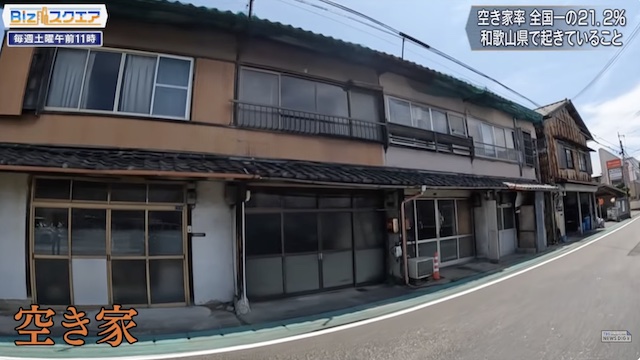TOKYO, Jun 17 (News On Japan) - The number of vacant homes in Japan has reached a record high of approximately 9 million due to factors such as an aging population and declining birth rates. Wakayama Prefecture, with a vacancy rate of 21.2%, and Setagaya Ward in Tokyo, which has the highest number of vacant homes among municipalities with 50,000 homes, have been the focus of recent investigations.

Located in the southern part of Wakayama Prefecture, Tanabe City is famous for its plum production but now faces the growing issue of vacant homes. A local neighborhood association recently reported a vacant house with a broken pillar, prompting an immediate inspection. The wooden one-story house, approximately 46 square meters in size, had a broken pillar and a leaning wall. A drone inspection revealed that half of the roof had collapsed.
Nearby residents expressed concern over the safety of such structures. The vice president of the neighborhood association, who also owns a vacant house, reported the issue. The city contacted the property owner, who agreed to demolish the house, leading to the arrival of a demolition contractor within two hours. With municipal subsidies, demolition commenced six days later.
Such vacant house issues are prevalent nationwide. According to a survey released by the Ministry of Internal Affairs and Communications in April, the number of vacant houses in Japan reached approximately 9 million, a record high. Wakayama Prefecture's vacancy rate of 21.2% is the highest in the country. In such regional cities, the cost of land often becomes cheaper than the demolition costs, leading to abandoned properties.
Tanabe City has been addressing this issue since 2017 by offering free demolition cost estimates and providing up to 500,000 yen in subsidies for houses at risk of collapse. This program's budget covers 12 demolitions, amounting to 6 million yen. Additionally, the city has introduced unique measures to utilize vacant land, such as transforming former vacant house sites into community gardens. A program launched in July allows neighboring residents to acquire adjacent land for a nominal fee, facilitating the extension of their property and ensuring community safety. This system has been utilized 53 times so far.
Efforts to repurpose vacant houses are also underway. A program matches residents wanting to start businesses with vacant houses, allowing them to renovate the property for use as study rooms for high school students or accommodation for university interns. Annual rent for such properties is 97,000 yen. The city has also conducted briefings with local businesses to promote further utilization of vacant houses.
However, the issue of vacant houses is not confined to regional cities. In Tokyo’s Setagaya Ward, areas like the quiet residential neighborhood near Komazawa Park have sections where vacant houses have become overgrown and dilapidated. Despite high property values, many owners prefer to hold onto these properties as assets, delaying decisions to sell or demolish them. Setagaya Ward has received approximately 200 annual inquiries about vacant houses, leading to detailed investigations and safety measures.
According to Nomura Research Institute, the vacancy rate in Japan is expected to double in the next 20 years. Setagaya Ward is focusing on preventive measures and supporting owners to avoid properties becoming vacant.
Source: TBS















